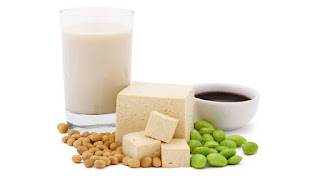The dairy & soy food sector in Indonesia is led by the milk category in both value and volume terms. Soy foods are naturally cholesterol-free and low in saturated fat. It is a major ingredient in the food industry comprising of meat alternatives, dairy alternatives, grains, snacks, cereals, meal replacements, protein powders, and formulas. Soy dairy alternatives are soy milk, soy creamers, soy yogurts, tofu¬-based butter alternatives, soy whipped toppings, soy cheese, and non¬-dairy desserts.
According to study, “Country Profile: Dairy & Soy Food in Indonesia” some of the major companies that are currently working in the dairy & soy food in Indonesia are Royal Friesland Campina N.V., PT Ultrajaya Milk Industry & Trading Company Tbk., Nestle SA, Fonterra Co-operative Group , H.J. Wijsman&Zonen B.V., Savencia SA, The Thai Dairy Industry Co., Ltd, Arla Foods, PT Sinar Mas Agro Resources and Technology Tbk, PT. Indofood CBP Sukses Makmur Tbk., PtBinaKarya Prima, Pt Smart Tbk, Unilever Plc, Bega Cheese Ltd., Kraft Foods Group, Inc., Macro Group Handels GmbH, PT Greenfields Indonesia, PT MuliaBoga Raya, Pt Diamond Cold Storage, The Kraft Heinz Company, Yummy Food. PT, Lakeland Dairies Co-Operative, Rich Products Corporation, Orang Tua Group, Pt. Pondan Pangan Makmur Indonesia, Pt. Zehat International, Ltd.
On the basis of distribution data, the dairy & soy food market is segmented into warehouse clubs, food & drinks specialists, hypermarkets & supermarkets, convenience stores, dollar stores, variety stores & general merchandise retailers and retailers etc. Convenience Stores are the leading distribution channel of dairy and soy food products in the country. On the basis of category coverage, the market is segmented into butter & spreadable fats, cheese, dairy-based & soy-based desserts, drinkable yogurt, from age frais & quark, milk, soymilk & soy drinks, and yogurt. On the basis of packaging data, the market is segmented into flexible packaging, paper & board, rigid metal, rigid plastics, and glass etc. On the basis of pack type, the market is segmented into the tub, bag/sachet, can, and carton - liquid, bottle, film, stand up pouch, wrapper, cub, aerosol, tray, and jar etc.
Some issues that impact on dairy industry development in Indonesia are scarcity of forage & high price of dairy cattle feed, low dairy cow productivity, small farm size, low milk quality, lack of technology for milking & processing, limited access to high-quality genetics, limited access to finance & bank loans and limited farmer education etc.
Dairy & soy food market have many success factors include developing demand, distribution network, coordination, supply chain, just-in-time, small group activities and kiosks etc. Growth factors are driven by increased consumption, value increase due to the rising price of milk, resulting from the expansion of consumption occasion and consumers trading up to more premium options. Additionally reduced fat is the main driver of health & wellness concerns in the market. Some growth areas are the impact of changing population profiles, increase in private label products, new product development and the growth of premiumization etc. Country’s e-commerce in dairy and soy food category is convenient and saves time with easy payment options, thus exposing a wide range of dairy alternatives.
In the recent years, dairy and soy food have witnessed a rise in demand due to factors such as advanced technological developments, increasing growth opportunities, market projections, rising internet penetration and ease of online transactions etc. In 2017, the per capita consumption of dairy & soy food was lower in Indonesia compared to global and regional levels.
To know more, click on the link below:-
Related Reports:-
Contact Us:-
Ken Research
Ankur Gupta, Head Marketing & Communications
+91-9015378249


No comments:
Post a Comment